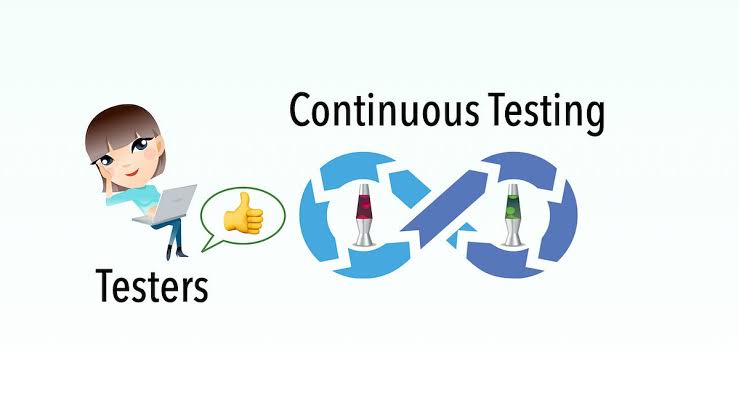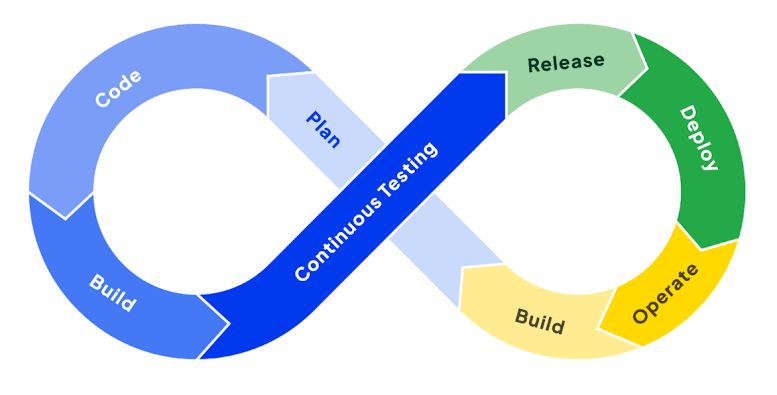The software development landscape has witnessed a transformative shift with the adoption of DevOps, a culture and set of practices that aim to automate and integrate the processes of software development and IT operations. At the core of DevOps is the Continuous Integration/Continuous Deployment (CI/CD) pipeline, which automates the building, testing, and deployment of code changes. To ensure the reliability and quality of these changes, Continuous Testing has become a crucial aspect of the DevOps lifecycle. In this blog, we will explore the significance of Continuous Testing and how the integration of Quality Assurance (QA) into CI/CD pipelines can enhance software development practices.
What is Continuous Testing?

Continuous Testing involves the automated execution of tests throughout the software development process. It aims to provide rapid feedback on code changes, enabling early detection and resolution of issues. The primary purpose is to maintain a high level of software quality by ensuring that each code commit undergoes a comprehensive set of tests.
Key Principles and Benefits
Automation: Continuous Testing heavily relies on test automation, which allows for the rapid and repeated execution of test cases. This not only speeds up the testing process but also ensures consistency in test execution.
Early Feedback: By integrating testing into the CI/CD pipeline, teams receive immediate feedback on the impact of code changes. This early detection of defects reduces the cost and effort associated with fixing issues in later stages of development.
Comprehensive Validation: Continuous Testing involves a broad range of tests, including unit tests, integration tests, and end-to-end tests. This comprehensive validation ensures that the software is thoroughly examined from different perspectives.
Collaboration: Continuous Testing promotes collaboration between development and QA teams, fostering a shared responsibility for the quality of the software.
Integrating QA into CI/CD Pipelines

Importance of QA in CI/CD
In a traditional software development lifecycle, QA is often a distinct phase that occurs after development. However, in a CI/CD environment, QA becomes an integral part of the development process. This integration ensures that quality is maintained throughout, and issues are identified and addressed early in the development cycle.
Benefits of Automated QA in CI/CD
Faster Release Cycles: Automated QA processes in CI/CD pipelines contribute to faster release cycles. The ability to quickly and reliably test code changes allows for more frequent releases.
Consistent Environments: CI/CD pipelines create consistent testing environments, reducing the chances of issues arising due to differences in testing and production environments.
Increased Test Coverage: Automation enables the execution of a vast number of test cases, leading to increased test coverage. This ensures that various aspects of the application are thoroughly validated.
Code Example: Unit Testing with JUnit
Consider a simple Java class representing a mathematical operation:
java
public class MathOperations {
public int add(int a, int b) {
return a + b;
}
public int subtract(int a, int b) {
return a – b;
}
}
Now, let us create a JUnit test for the MathOperations class:
java
import org.junit.Test;
import static org.junit.Assert.assertEquals;
public class MathOperationsTest {
@Test
public void testAdd() {
MathOperations math = new MathOperations();
int result = math.add(3, 7);
assertEquals(10, result);
}
@Test
public void testSubtract() {
MathOperations math = new MathOperations();
int result = math.subtract(10, 5);
assertEquals(5, result);
}
}
This simple example demonstrates how unit tests can be written using JUnit to ensure the correctness of individual methods.
Let us add another code example that demonstrates the implementation of a basic unit test using the popular JUnit framework in Java. This example will focus on testing a simple Java method.
Unit Testing with JUnit in Java
Suppose we have a Java class Calculator with a method add that adds two integers. We’ll write a unit test for this method using JUnit.
First, here’s the Calculator class:
java
public class Calculator {
public int add(int a, int b) {
return a + b;
}
}
Now, let us write a JUnit test case for the add method:
java
import static org.junit.Assert.assertEquals;
import org.junit.Test;
public class CalculatorTest {
@Test
public void testAdd() {
Calculator calculator = new Calculator();
int result = calculator.add(10, 20);
assertEquals(30, result); // Check if the addition is correct
}
}
In this example, the testAdd method creates an instance of the Calculator class and calls the add method with two integers (10 and 20). The assertEquals method from JUnit is then used to assert that the result of the addition is as expected (30 in this case).
Including this test case in the CI/CD pipeline ensures that the add method of the Calculator class works as intended before any code changes are merged into the main branch. This is a fundamental example of how unit testing can be integrated into Continuous Testing within a DevOps framework.
Tools and Technologies for Continuous Testing
Test Automation Frameworks
Selenium: A widely used open-source framework for automating web browsers. It supports various programming languages and browsers, making it suitable for web application testing.
JUnit and TestNG: Java-based testing frameworks that facilitate the creation and execution of automated tests. They provide features like test parallelization and parameterization.
Containerization and Docker
Docker is a powerful tool for containerization, allowing applications and their dependencies to be packaged into containers. This ensures that tests run in a consistent environment, regardless of the underlying infrastructure.
Best Practices for Continuous Testing in DevOps

Effective Test Case Design
Prioritization: Focus on high-priority test cases that cover critical functionalities and scenarios.
Modularization: Break down tests into modular components for better maintainability and reusability.
Test Data and Environment Management
Dynamic Test Data: Use dynamic test data generation to ensure tests are not dependent on static data, preventing data-related issues.
Infrastructure as Code (IaC): Define testing environments as code, allowing for easy recreation and minimizing inconsistencies.
Overcoming Challenges in Continuous Testing

Common Challenges
Test Automation Maintenance: Keeping automated tests up-to-date with evolving codebases can be challenging. Regularly review and update tests to align with code changes.
Environment Variability: CI/CD pipelines involve multiple environments, leading to variability. Implement strategies like containerization to ensure consistent testing environments.
Strategies to Overcome Challenges
Continuous Education and Training: Keep the team updated on the latest testing tools and practices to address challenges effectively.
Collaboration between Dev and QA Teams: Foster collaboration and communication between development and QA teams to address challenges collaboratively.
Examples That Give Clarity
Example 1: XYZ Corporation
XYZ Corporation successfully implemented Continuous Testing by integrating automated tests into their CI/CD pipeline. This resulted in a 30% reduction in release cycles and a significant increase in overall software quality.
Example 2: ABC Inc.
ABC Inc. adopted a containerized testing approach using Docker. This not only streamlined their testing process but also eliminated environment-related issues, leading to more reliable and consistent test results.
Conclusion
Continuous Testing, when seamlessly integrated into CI/CD pipelines, becomes a linchpin for achieving the goals of DevOps. The examples and practices discussed in this blog highlight the significance of automated testing in ensuring software quality throughout the development lifecycle. Embrace Continuous Testing to elevate your software development practices, reduce time-to-market, and foster collaboration between development and QA teams. The journey towards a more efficient and quality-centric DevOps process begins with the integration of Continuous Testing.






Add comment